In a digital logic class I was taught that a digital signal is one whose y-component, voltage, is discretized but whose time domain is continuous. In a signal processing class, we worked with digital signals that may have 8 bits of discrete voltage values, but were also discretized along the time domain as they were samples of speech. Are both of these signals true digital signals?
-
_"also discretized along the time domain"_ - were these the original signals, or samples of those signals? – Paul Uszak Jan 14 '21 at 19:05
1 Answers
If you're talking about a signal in the context of digital signal processing (DSP) you can think of it like a WAV audio file: the time axis is discrete, and the amplitude (value) axis is also discrete. Note this does not mean the discrete steps are uniform. For example if the signal has floating point values instead of integer or fixpoint, then the values are discrete, there is a finite number of possible values, but the interval between each value and the next possible value is not always the same. If your signal is a sequence of N-bit LPCM integer samples, then the interval between each sample and the next is the same.
DSP signals are data, in other words abstract constructs (ie, numbers) handled by computers. They may be transmitted using any encoding you can think of over radio, wires, or optical fibers, or pigeon post, but what they really are is a sequence of abstract numbers. And they exist independent of the physical storage and encoding: for example a WAV file still contains the same data no matter if it is stored on a hard disk, loaded in RAM, etc. And it still contains the same data if you use lossless compression like FLAC to store it.
In a DSP signal the value axis is abstract (it may represent the number of potatoes produced by year, or whatever) but the time axis is also abstract. I'm not just talking about varying sampling rates, rather that in DSP time does not exist in the same way than in the real world. If the processing unit is fast enough, it can process the signal faster than real time. For example you can encode a MP3 file in much less time than it would take to play it. DSP time meets real time only when the digital signal is converted from/to real world analog signals. But once the signal is data, time is just a label that says "this sample was recorded at timestamp X".
If you're talking about a signal in the context of hardware digital logic then your signal will most likely be a single bit, 0 or 1, encoded as voltage or current, carried either by a single wire or a differential pair. In this case the digital signal is a meaning we give to a physical analog signal that exists in the real world. The analog signal is continuous in time and amplitude, but we decide that we'll consider it a "1" if it above a certain threshold, a "0" below another threshold, and a "whatever/X" if it is in-between. This is a useful simplification that allows us to design logic circuits by hiding the analog complexity. These signals are always time-continuous, since they really are voltages, not numbers. But some logic circuits, like flops, will only look at the input on the edge of a clock cycle (and a bit before and after), which means we can pretend that we have a time-discrete system. Unless there is a timing violation, metastability, or other events that break down the assumptions and make everything analog again.
If you're talking about a signal in the context of digital communication, then it will most likely be a sequence of symbols. That can be anything, voltage, frequency, phase, etc, that encodes some information like one or several bits. For example, this is a telegraph symbol that encodes a letter:
- 70,433
- 3
- 83
- 203
-
That's very interesting! When you plot a DSP signal, I know it's more accurate to merely plot points as opposed to a step function. But when those samples are reconstructed into an electrical signal, they'd have to go through a Digital-to-Analog converter before going to a speaker. In learning about DACs, I've only ever seem them with an input of PWM, which would be more akin to a hardware digital logic signal. Does the system have to convert this DSP signal to a series of square waves? And how would it do that? Thank you. – Thomas Coor Jan 14 '21 at 22:14
-
There are plenty of types of dacs with different strengths and weaknesses depending on what you need https://en.wikipedia.org/wiki/Digital-to-analog_converter#Types – bobflux Jan 15 '21 at 07:50
